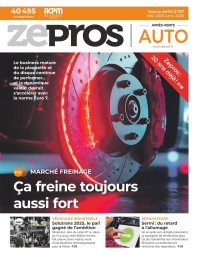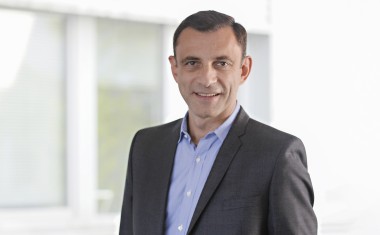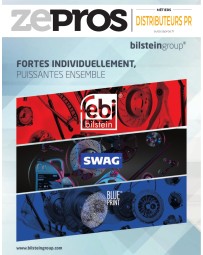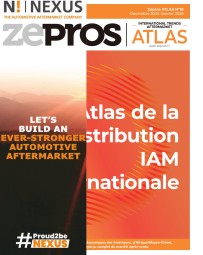
Niterra : “No slump in demand for combustion engine parts”

The Japanese equipment manufacturer expects growth in 2025 for ICE parts and is not alarmed by the development of the EV car park.
David Loy: 2024 was a good year for Niterra, with double-digit growth following on from 2023. The market remains buoyant as the vehicle fleet continues to age. As spark plugs have high replacement rates, the vehicles that remain in the fleet go through an additional maintenance cycle. This is particularly true in Europe. Elsewhere in the world, the fleet is growing, so the general trend is positive.
D.L.: In May 2023, the Group acquired the British website Whocanfixmycar to bring customers closer to workshops, which is currently limited to the UK market. We’re using the site to test how it can simplify the process of booking a workshop appointment, to create transparency and trust between garage owners and end customers. Customers can rate the garage that has serviced their vehicle, which helps to build trust. This type of approach has a bright future, as demonstrated by Yelp’s $80 million acquisition of RepairPal in the United States in November this year.
D.L.: There were no new NGK ignition products this year. But worldwide, we’re still enjoying strong growth in the brand’s ignition coils, which we launched in Europe a few years ago and have gradually extended worldwide. Garages easily associate spark plugs and coils, which boosts sales. As for NTK brand sensors, our portfolio is expanding every two years. The latest development relates to EGR valves, in 2023, whose sales have got off to a good start. NTK is growing because it brings together products that are still relatively underdeveloped in the independent aftermarket, and for which too many workshops send the vehicle back to the OES. It is therefore a business that can continue to grow in the IAM, in both Europe and the United States.
D.L.: The contexts are inevitably very different. In China, EMEA and the United States, maintenance is becoming increasingly complex, not least because after downsizing, workshops have had to cope with the development of hybridization. The need for workshops to be equipped with diagnostic tools and solutions for obtaining technical data is growing all the time. In China and Europe, the challenge of servicing fully electric vehicles is now a reality. In this respect, training is a challenge. As for digitalization, it takes different forms, with more and more e-commerce. China is quite a pioneer in this field. In Brazil, an increasing number of BtoB platforms are being set up. And there are initiatives like ours with Whocanfixmycar, to bring workshop and customer closer together. In Africa and the Middle East, the challenge for the future is to upgrade the skills of workshops to make their fleets safer and less greenhouse-gas-emitting. It’s also important to give their populations access to skilled positions, so we’re entering into partnerships with local governments – in Kenya, for example – to set up training courses. The final challenge is counterfeit goods, which we are actively combating in certain markets in Africa and the Middle East, and to a lesser extent in South-East Asia. In particular, we are setting up a label in Africa, Trusted Program, to enable workshops to be trained and made aware of this issue
D.L.: Yes and no. It depends on the type of operation. For an independent garage that’s been trained to work with high voltage, it’s not necessarily a challenge. Not all of them are, of course. However, among the new vehicle brands, very few have branded workshop networks, so there’s an opportunity for the independent aftermarket.
D.L.: Initially, we don’t foresee a slump in demand for aftermarket products for combustion-engine vehicles. On the contrary, the technical sophistication of vehicles and increasing environmental regulations will drive market development and sensor sales, so we’re confident. For original equipment, electrification will be a challenge in Europe, and it already is in China. But in the EU, we’re still waiting to see how the Green Deal rules are going to evolve. In R&D, we’re continuing to work on technical ceramics, which offer advantages in terms of electrical conduction and thermal insulation.
D.L.: In Japan, by tradition. In China too, because consumers have a reflex to go to the manufacturer, and the difficulty of accessing certain parts forces them to do so. There’s also a real dynamism of the 4S (sales, service, spare parts and surveys) in China: dealers who sell vehicles and are also strong in maintenance, with a good level of equipment and product offerings.
D.L.: We expect another year of growth, based on the same fundamentals: an aging fleet and real, albeit weaker, global growth, despite the concerns surrounding geopolitical and/or climatic events. Shipping traffic on the Panama Canal is still closely monitored, as there are restrictions. The world is not fully aware of the post-Covid consequences, and has not put in place the tools to monitor demand more closely. And in terms of new vehicles, the big trend – which has emerged very recently – is the massive increase in sales of Chinese vehicles: between 10% and 30% of sales in some countries, with vehicles that will need aftermarket.
Retrouvez la version française ici : David Loy (Niterra) : «Pas d’effondrement de la demande de pièces pour moteur thermique»






